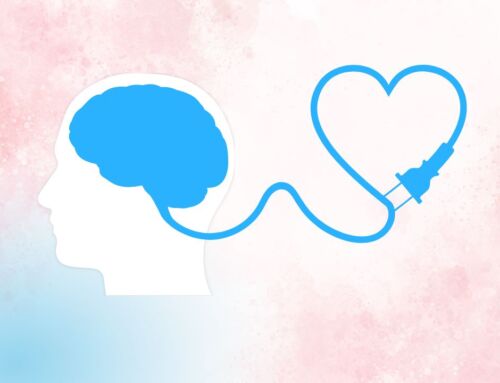Mindfulness teaches us how to feel emotions in our bodies. Feelings like shame, guilt, and anger can all be felt somewhere in the body; emotion is not just an intellectual thing.
And when you can notice and become aware of the emotions in your body, you can treat yourself with kindness.
Mindful Self-Compassion (MSC) is a method of using mindfulness to comfort yourself when you experience suffering. With MSC, you treat yourself like you are a dear friend. When you comfort yourself when you feel guilt or shame, that’s self-compassion – self-love. That’s an antidote to guilt and shame.
It hurts to feel shame, but it’s helpful to remember that it is a universal experience. When we remember that we are connected – even in our darkest moments – to people all over the planet who have experienced something similar, this can help us to alleviate potential feelings of isolation which may lead to depression, compounding our feelings of shame or guilt. That is a downward spiral. Let’s see how we might turn that spiral into one that moves upward!
4 Mindful Steps to Deal with Guilt and Shame
Next time you notice yourself getting stuck in a harmful thought spiral of shame or guilt…
Name the emotion.
The best thing you can do in that moment is pause long enough to name your emotion. Call it out. Recognize it for what it is. This simple step begins to calm your brain down and give you some space around your feelings.
Locate your emotion in your body.
See if you can feel where the emotion is in your body. Do you feel it in your stomach? In your jaw? In your neck? Where do you feel tension or discomfort?
Apply soothing touch.
Place your hands over that spot and try to soothe or comfort yourself that way. Imagine warm oil or a warm compress opening up the constricted area. If that doesn’t work, you can place your hands anywhere on your body that you find comforting, such as over your heart, on your belly, cradling your face, around your shoulders in a hug, etc. When you give yourself this soothing touch, you are loving yourself. You are giving yourself comfort when you feel activated by some negative emotion. This takes you out of reactivity mode and into a more loving, calm space. You are releasing the nurturing hormones of oxytocin and endorphins which calm your system.
Change the channel.
Finally, as a last step, change the channel. It can be hard to change the channel as a first step when you’re feeling so poorly. So, call your emotion by name, locate it in your body, apply soothing touch to yourself, then invite yourself to change your channel of thought to improve your mood. You can do that a variety of ways: You can focus on something you are grateful for, perhaps going so far as to write a letter of gratitude to someone. You don’t need to send it to get the mental health benefits of the shift in mood. You might choose an activity to do from your joy list that you feel would fill you with calm, loving feelings. You might pull up a wonderful memory and marinate in the feelings to install the goodness in your body and mind, pushing the mental state into a neural trait, so the happy bridge gets reinforced in your brain. That last tip is how I learned to rewire my brain for happiness and resilience, thanks to the groundbreaking and prolific work of Rick Hanson.
For a more in-depth examination of this topic, check out my interview with Ande Anderson.
May you be safe.
May you be happy.
May you be healthy.
May you live with ease.





















Just wonderful